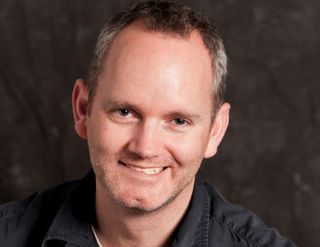Shifting VR Out of the Novelty Stage

Watching a surfer zip through a curling wave or experiencing what it’s like when a snowboarder vaults high above a jump have served as nifty entry points to the world of 360-degree video productions.
Those sorts of experiences may offer a taste of VR, but they still come up short of a meal in terms of storytelling.
One company that aims to bring more of a narrative focus to the VR picture is CryWorks, a startup backed by veterans of Pixar, Industrial Light & Magic and The Walt Disney Co. CryWorks is coming off a recent round of seed funding led by director Michael Bay’s 451 Media Group, 500 Mobile Collective and WI Harper Group.
“The main focus of the company is creating original VR content,” said CryWorks founder and CEO Euan Macdonald, a former exec of Lucasfilm/ILM, Pixar, Disney and Electronic Arts, who boasts films from the Star Wars, Jurassic Park and Harry Potter franchises among his credits. Others on the CryWorks co-founding team include chief technology officer Hans Uhlig and chief content officer Kymber Lim.
“There’s a lot of 360 [degree] VR experiences out there that are truly just that,” Macdonald said. “It’s still quite a novelty for people to look around the video experience.”
CryWorks will do more than use a VR camera to capture someone skiing down a steep hill, he said. It will use the new medium to create entertaining stories.
“There’s been very little effort in creating, original, interesting entertainment in 360, mainly because it’s a different way of creating video content,” Macdonald said.
Multichannel Newsletter
The smarter way to stay on top of the multichannel video marketplace. Sign up below.
That also creates challenges for video storytellers accustomed to a two-dimensional canvas, where they can direct the viewer’s eye to the action that is pushing the story forward.
Though VR allows for 360-degree viewing, Macdonald said it’s still important in storytelling to keep the watcher’s eyes generally focused on a 180-degree field of view.
“It’s still a more passive kind of lean-back experience, as opposed to a full-on interactive video game,” Macdonald said. “As such, most people are sitting down when they are experiencing this. Having key actions happening behind [the viewer] doesn’t make a lot of sense.”
Still, there are ways to draw a viewer’s attention, even in a 360-degree environment. Some VR productions use audio cues to tell viewer where new action is occurring.
“Spatial audio is a big part of how we direct where people should look,” Macdonald said, noting that producers can also use arrows and other graphic cues to direct the viewer’s eyes. “But it can be overused as well.”
CryWorks has yet to announce its full production slate, but the plan is to focus initially on short-form serial content, including narrative fare as well as some 3D, animated films that take advantage of VR environments.
Also on tap in the early phases are reality TV-like shows that provide a “fly-on-the- wall” experience. “By starting out with that type of content, we can achieve lower production costs without getting writers involved along with a lot of sets and other costs,” Macdonald reasoned.
CryWorks has already produced some VR content, particularly around virtual tours. For example, it recently teamed with The Wall Street Journal on a short film that represents a day-in-the-life of a newsroom, including the editorial meetings that determine the day’s coverage down to the printing process itself. It has also worked with Samsung (maker of the Oculus-powered Gear VR headset) on a behind- the-scenes, 360-degree video series with world-renowned chef Daniel Boulud.
CryWorks is also already expanding beyond content creation. It has also developed an in-house camera capture system that’s optimized for VR. In addition to using that platform for its own means, CryWorks also plans to sell and license it to others and will announce more details later this year.










